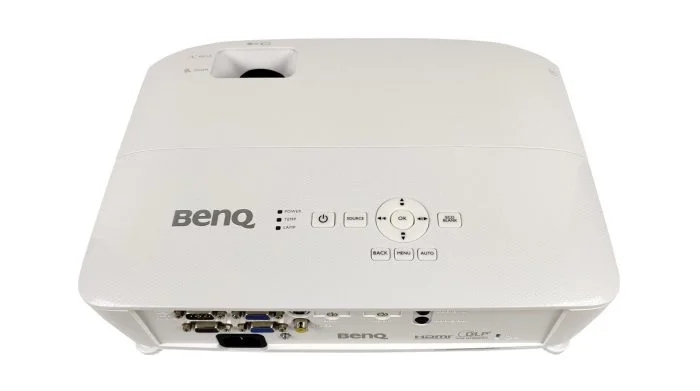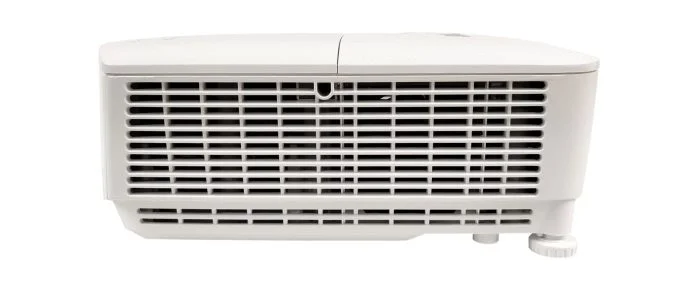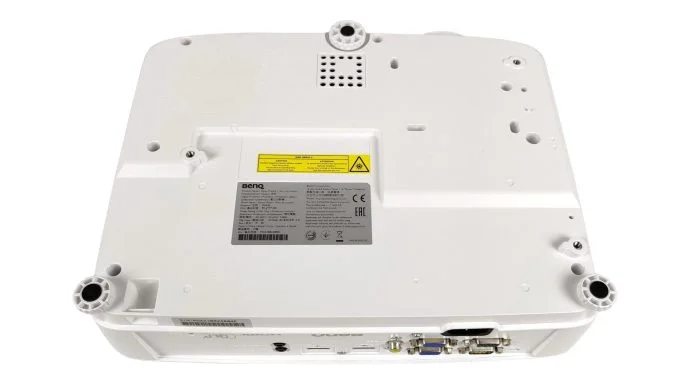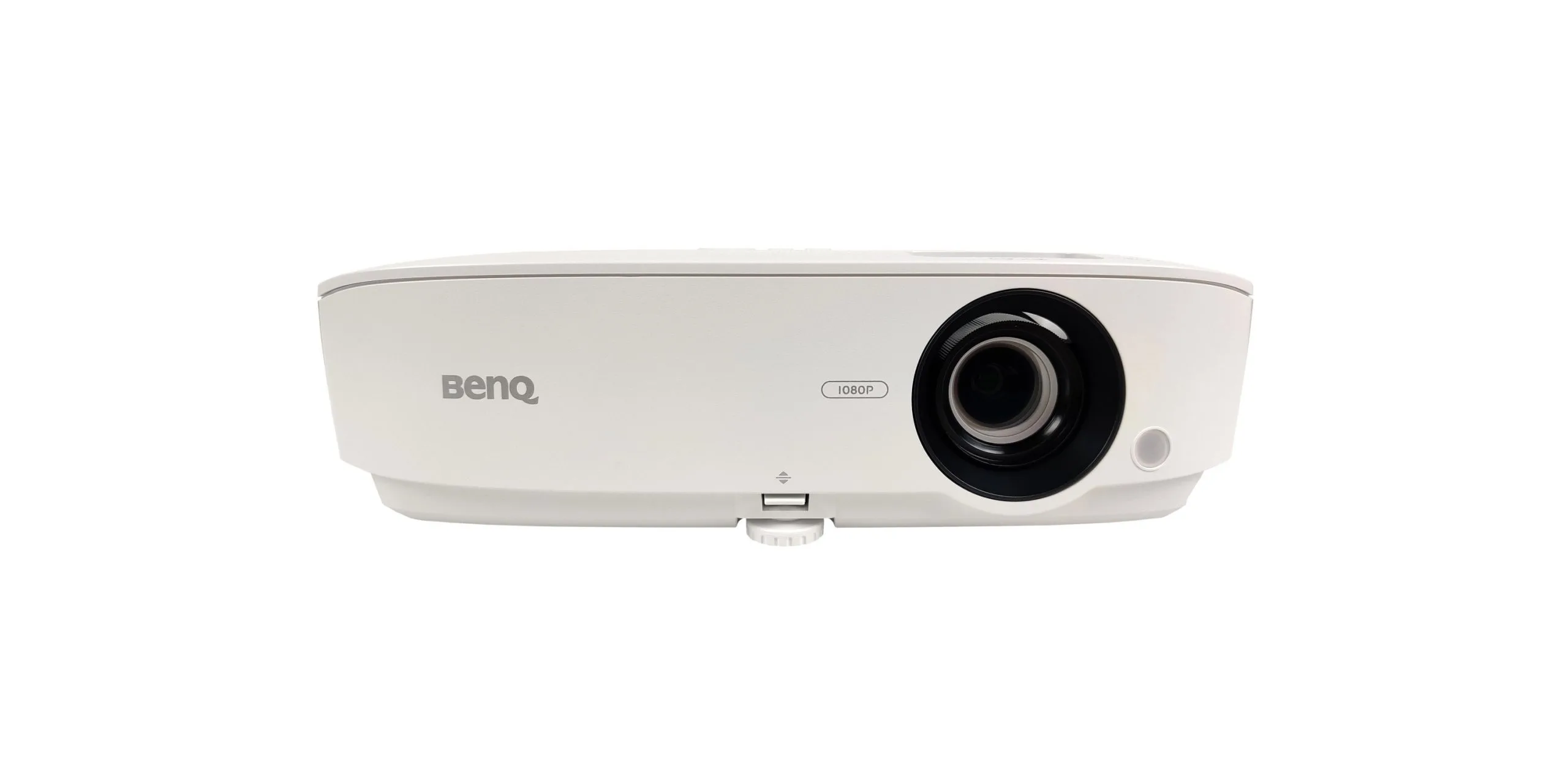Review: BenQ MH535
Anyone who has decided to buy a projector will quickly find that many manufacturers differentiate between "home theater" and "business projectors". But what actually makes the difference?

Home theater projectors, as the name suggests, are primarily designed for entertainment. Be it playing films and series or for gaming. The decisive factors for this are particularly strong colors, a high contrast ratio and features such as High Dynamic Range (HDR).
Business projectors, on the other hand, are designed for presentations. A particularly high light output, versatile connection options and flexible positioning are what count there.
The advantages of one are usually the disadvantages of the other. It is often the case that the high light output is detrimental to the image quality. This results in a lower contrast ratio and less color fidelity.
But is that always the case?
Design, workmanship and delivery
After this introduction, let's go straight to the design of the BenQ MH535. BenQ does not dare to experiment with design and has opted for a tried and tested, but still contemporary design.

With a housing size of 333 x 99 x 215 mm, the MH535 is one of the more compact models. In addition, the weight is kept pleasantly low at just 2,42 kg, so that the projector can be used very well on the move. A film screening at a friend's house? No problem! Only the matching transport bag is missing.

Overall, the plastic housing looks high-quality and is well made. The design is rounded off by the structured surface of the top of the housing. There are generously chosen ventilation slots on the sides, which ensure extensive ventilation.
Three height-adjustable feet on the underside allow flexible and precise positioning. The front foot is secured by a quick lock. This means that the projector can also be locked at the desired position in height and incline during operation. A ceiling attachment is of course also possible.

All connection options are located on the back of the housing. This is where the fact that the BenQ MH535 is designed as a business projector comes into its own. In addition to two HDMI 1.4a video inputs, there are even more special inputs, such as VGA (RGB / Component), S-Video and an RS323 control interface. The high-speed interfaces DVI or DisplayPort have been dispensed with. Sound can be fed in or output via an audio-in and audio-out socket. In addition to RS323, control data can also be transmitted via USB (Mini B). A Kensington cut-out protects the projector (with the appropriate lock) against theft.

The lens can be adjusted manually. A focus and zoom wheel is embedded in the front part of the projector. As expected, there is no motorized solution with LensMemory in this price range. There is also no optical lens shift, only digital keystone correction.
Hardware
The BenQ MH535 makes use of the DLP projection technology from Texas Instruments. The heart of this "digital light processing" technology is the DMD chip, a component with micro mirrors. BenQ does not provide any further details about the chip.
The native resolution is 1920 x 1080 pixels, the aspect ratio is 16: 9. The light source of choice is a 210 watt lamp with a maximum light intensity of 3500 ANSI lumens. The 10-bit color depth enables 1,07 billion colors to be displayed. The contrast ratio is given as 15.000: 1. An optical zoom enlarges the picture 1,2 times.

The lamp life varies depending on the brightness mode. At full brightness ("Normal" mode) the service life is approximately 5.000 hours. The SmartEco mode, which automatically adjusts the image brightness to the content displayed, increases the service life to around 15.000 hours. That doesn't sound like much, but even if you use the projector for 4 hours every day in SmartEco mode, the lamp would theoretically only need to be changed after about 10 years! It is possible to change the lamp yourself. A replacement lamp costs around 80 euros. The lamp cover is held in place by a screw on the side.
Commissioning and user interface
OPERATION
Commissioning the BenQ MH535 is easy for beginners. After switching on for the first time, you will be greeted by the OSD (on-screen display), which suggests several languages to choose from. Connected source devices are recognized immediately.
In order to be able to estimate the required projection distance, BenQ provides a detailed table. You should especially keep an eye on the vertical offset. The lens is fixed at an inclination of 7%.

It takes a maximum of 60 seconds for the projector to reach its operating heat. The image is then projected at full brightness.
Service
It can be operated directly via a control panel on the projector or the remote control. The extensive control panel is easily accessible on the top of the case. There is no key illumination. Next to the control panel there are 3 LED indicators that provide information on the energy supply, the temperature and the lamp.

The compact remote control is adequately labeled and some of it is indicated by understandable symbols. There is no key illumination here either. The infrared receiver is located on the front of the housing. Despite the one-sided placement of the receiver, the projector can be operated from pretty much any position, including from the rear.

The OSD is clearly structured and easy to use. The individual sub-areas are clearly arranged and the essential settings can be found in no time at all.
Home cinema, presentation and gaming suitability
picture quality
The BenQ MH535 was allowed to pose various test tasks to assess the image quality. The measurements were made on the factory settings with a Spyder5 colorimeter in a completely darkened room.

measurements
The following measurement results were obtained after several test measurements on a 90 inch projection surface with gain 1.0.
- Luminous flux: BenQ specifies the maximum brightness with 3500 ANSI lumens. The luminous flux measured in the center of the image reaches 2.513 lumens in "Normal" mode and 1.103 lumens in "Eco" mode.
- Black level: The black level is 1,491 lumens (normal) or 1,029 lumens (eco).
- Contrast ratio: BenQ specifies the contrast ratio as 15.000: 1. The static contrast ratio determined by measurements is 1.685: 1 (normal) or 1.072: 1 (eco).

Subjective impression
After switching on the BenQ MH535 for the first time, I immediately noticed the outstanding brightness of the projection. The room was not completely darkened, the projection size was 90 inches and still a usable image was produced. Definitely not every projector can say that!

Brightness comparison - daylight - darkened - dark
The display is pleasantly sharp across the image surface. There are minor drops in image sharpness towards the edges. To a perfectly acceptable degree, however. Small fonts remain legible right up to the corners. A pixel grid can only be seen when viewed very closely. You really have to stand in front of the screen to see the individual pixels! Visible irregularities in the brightness distribution hardly occur.
- Brilliant Color - ON
- Brilliant Color - OFF
In contrast to real home theater projectors, which show off numerous image enhancers, the BenQ MH535 offers almost no enhancement technologies. Only "Brilliant Color", an algorithm for color processing and improvements to the system level, ensures lively and particularly natural colors. And that is understandable. The MH535 offers considerable color fidelity for a business projector. The projector even copes well with difficult, high-contrast scenes without the color and detail reproduction suffering too much.
Audio and 3D
The 2 watt loudspeaker has a clear sound, but does not achieve a particularly high volume. If you want to use the projector in the home theater, you should definitely use an external sound system. The connections required for this are available.

Playback of 3D content is supported in the form of DLP link. 3D glasses are not included in the scope of delivery, but are available as an optional accessory. You can choose between the 3D modes "Top-Bottom", "Frame Sequential", "Frame Packing" and "Side By Side". Extensive 3D color settings allow precise adaptation to your own needs. The 3D rendering was convincing in the test. The 3D image is displayed brightly, with strong colors and good contrast.
Operation Volume
The operating noise in the "Normal" mode, with a normal seat spacing, is approximately 34 decibels. In the "Eco" mode, 30 decibels were measured. The fan noises can only be heard in quiet moments in the movie.
Gaming suitability
In the last point we take a look at the gaming suitability of the BenQ MH535. The maximum refresh rate is 60 Hz. There is no special gaming mode. This is also not necessary, because even with gaming (console and PC) there is no noticeable input lag.

BenQ MH535
Compact design
Good workmanship
Many connection options
Flexible positioning
Long lamp life
Good color representation
Clear image
Very high brightness
No DVI / DisplayPort
No wireless streaming options
Weak speaker
The BenQ MH535 is an all-rounder in its price range. What is remarkable is the very high brightness and yet strong color rendering. BenQ's “Brilliant Color” algorithm also contributes to this, which visibly improves the display and makes it particularly suitable for home cinema.
Thanks to its compact design and numerous connection options, the projector can be used flexibly. A spontaneous movie night with friends or setting up a projector for a sports broadcast in the garden? No problem with the MH535.
Whether presentation, home theater or gaming, the MH535 can be used universally and copes very well with each of these areas of application.




